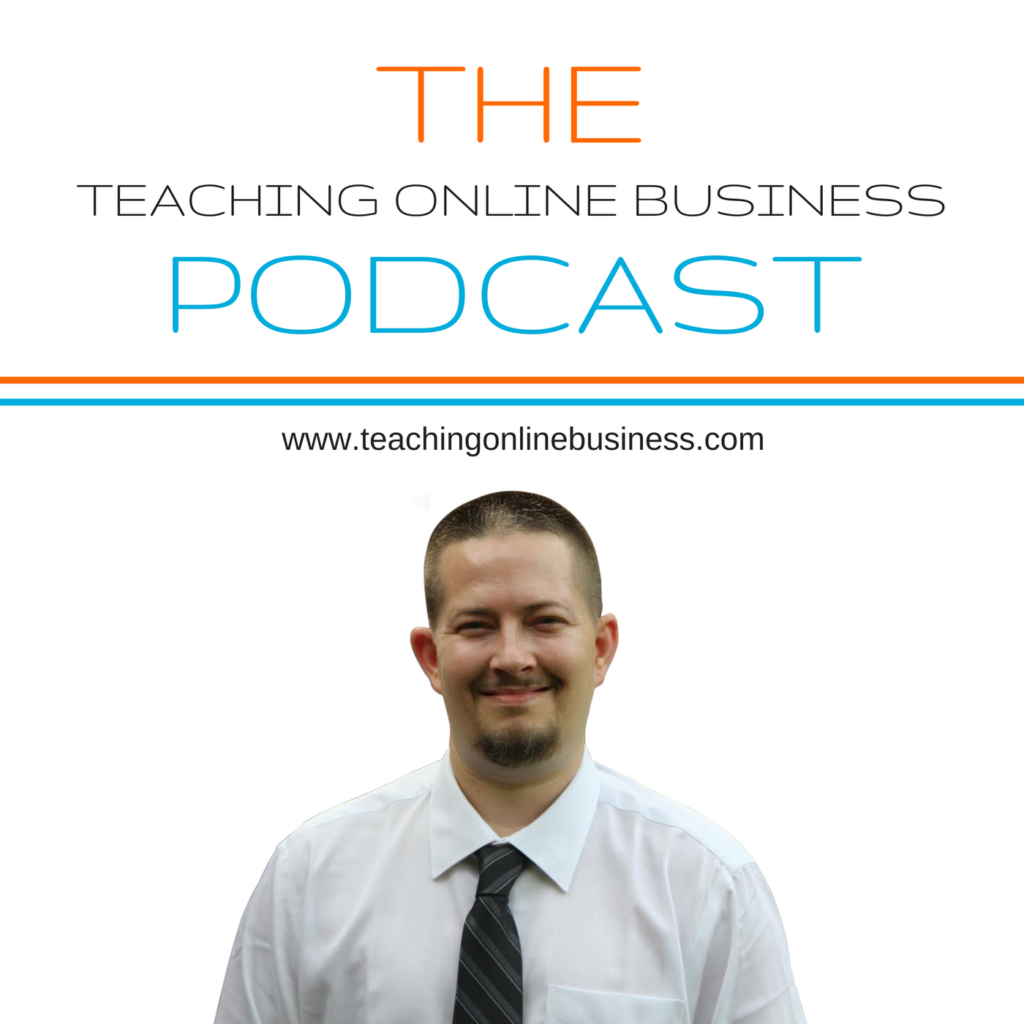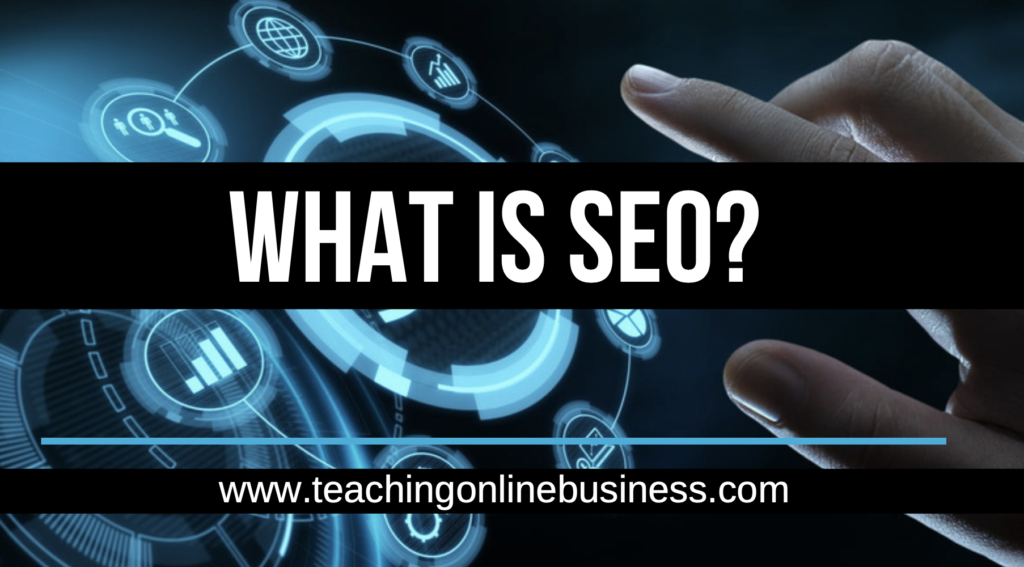
What Is SEO? Our Guide To Getting Started With Search Engine Optimization
Search engine rankings are extremely important, especially when you consider that 80 percent of the world use Google when searching for a product or service. The top three results have click-through rates that vary from 10-35 percent. The last result on the first page of Google only receives around 2 percent CTR. If your website doesn’t appear on page one for relevant search terms, it’s not reaching its full potential.
This is where search engine optimization (SEO) plays a role.
What Is Search Engine Optimization?
While SEO can refer to a lot of different search engine optimization terms, it usually covers what a brand or company does to get organic traffic from search engines – mainly the Google search engine. SEO involves a lot of different pillars, from technical SEO and SEO content to SEO keywords or SEO backlinks, it all points to the specific actions one takes in order to rank their website on the 1st page of Google.
In theory, SEO is simple. However, search engine optimization is always changing and always evolving. When you consider all the SEO myths that have become a part of what digital marketers are taught in main stream SEO, it’s no wonder why companies choose to outsource SEO – they don’t want to deal with it. Who could blame them?
SEO doesn’t have to be complicated and if you’re just now learning SEO or you’re an experienced SEO expert, there’s always something to be learned here. (We’re glad you are here).
How Do Search Engines Work?
The best way to think about how search engines work is comparing it with a library. In a library, books of all types are stored within the library. On the internet, Google stores web pages, but it’s the same concept.
When you search for a specific search query in Google, it scans all the pages in their index and returns the most relevant search results.
In order to do this, Google relies on a computer program, also known as an algorithm. While nobody but Google knows how the algorithm works, we do have tidbits of knowledge that Google has gave us over the years.
In fact, below, this is exactly what they tell you – this is found on their How Search Works page:
To give you the most useful information, Search algorithms look at many factors, including the words of your query, relevance and usability of pages, expertise of sources and your location and settings. The weight applied to each factor varies depending on the nature of your query – for example, the freshness of the content plays a bigger role in answering queries about current news topics than it does about dictionary definitions.
Now, you may have noticed I’ve been focused on Google a lot versus other search engines, there is a reason for that. Google is the most used search engine globally and no other search engine comes close to their volume of daily searches. NO ONE
How Does SEO Work?
In the most simplified explanation I can give you, SEO works by showing search engines that your content is the most valuable, most relevant result to users that search for that specific search query.
A lot of people overthink SEO – but I recommend viewing SEO from Google’s perspective. What is Google trying to accomplish when they return search engine results? They want to show the user the best possible results. Period.
If you want more organic traffic from your content and web pages, you better understand Google’s algorithm and how to feed it with what it wants to see. If you can do that, you’re likely to see good results.
Every search engine has their own algorithm and they do differ, but as I said earlier, we’re focusing on Google’s search engine in this article.
Why Is SEO Important?
While you can use pay-per-click advertising (PPC), social media, email marketing, and other online platforms to generate traffic to your websites, the majority of online traffic is driven naturally by search engines. Specifically Google’s search engine.
Organic search results cover a ton of digital real estate, they also appear more credible to savvy searchers, and receive more clicks than paid advertisements. While paid results display text that points out the result is an ad, organic results don’t.
In a nutshell: SEO has ~20X more traffic opportunity than PPC on both mobile and desktop.
SEO is also one of the only online marketing channels that, when set up correctly, can continue to pay dividends over a long period of time. If you provide a solid piece of content that deserves to rank for the right keywords, your traffic can grow over time. The best part, that traffic is free. If you’re paying for that traffic, you’ll have to continue to pay for it month after month.
Search engines are getting smarter, but they still need our help.
Optimizing your site will help deliver better information to search engines so that your content can be properly indexed and displayed within search results.
Google Search Console
Google does give SEOs and webmasters a lot of useful information through their Webmaster Central Help Forum and by hosting live office hour hangouts.
While search console guidelines vary from search engine to search engine, the underlying principles are the same for each: Never try to trick or manipulate the search engines. Rather, you want to provide your visitors with the best online experience possible.
If you want to succeed here, make sure you’re following search engine guidelines and focusing on user intent.
Google Search Console Guidelines
Basic principles:
- Always build your pages for users, not search engines.
- Never deceive or trick your users.
- Avoid tactics that are intended to improve search engine rankings. A good rule of thumb is whether you’d feel comfortable explaining what you’ve done to a website to a Google employee. Another useful test is to ask, “Does this help my users? Would I do this if search engines didn’t exist?”
- Think about what makes your website useful, unique, valuable, or engaging.
Things to avoid:
- Automatically generated content
- Engaging or participating in link schemes
- Publishing pages with little or no original content (i.e. copied from somewhere else)
- Cloaking — this is the practice of showing search engine crawlers different content than what your visitors are seeing.
- Hidden text and links
- Doorway pages — these are pages created to rank well for specific searches to funnel traffic to a specific website.
The Best Way To Optimize SEO For Google
You’ve heard all the SEO experts say that Google has over 200+ SEO ranking factors. Heck, I’ve heard as many as multi-thousands – but don’t get lost in that.
Truth be told, there’s only a handful of SEO strategies that move the needle and are worth your time. If you want SEO results, stick to the needle movers.
Now, Google ranks web pages, not just websites. A web site can rank many pages on many different topics. One single web page can rank thousands of keywords.
Crawling And Indexing
The web is made up of an ever-expanding mass of pages connected by links. Search engines need to find these pages, understand what’s on them, and store them in a massive data horde known as an index.
To do that, they use bots—known as spiders or crawlers—to scan the web for hosted domains. The crawlers save a list of all the servers they find and the websites hosted on them. They then systematically visit each website and “crawl” them for information, registering types of content (text, video, JavaScript, etc.), and number of pages. Finally, they use code tags like HREF and SRC to detect links to other pages, which they then add to the list of sites to crawl. That allows the spiders to weave an ever-larger web of indexed pages, hopping from page to page and adding them to the index.
That said, some things can block Google’s crawlers:
- Poor internal linking: Google relies on internal links to crawl all the pages on your site. Pages without internal links often won’t get crawled.
- Nofollowed internal links: Internal links with nofollow tags won’t get crawled by Google.
- Noindexed pages: You can exclude pages from Google’s index using a noindex meta tag or HTTP header. If other pages on your site only have internal links from noindexed pages, there’s a chance that Google won’t find them.
- Blocks in robots.txt: Robots.txt is a text file that tells Google where it can and can’t go on your website. If pages are blocked here, it won’t crawl them.
User Search Intent
Search intent is very important to understand for SEO. One of the first steps to SEO is keyword research, you’re going to need SEO software to research SEO keywords.
Finding those keywords is easy, where people get into trouble is search intent. If the keyword you choose to rank doesn’t align with the user’s intent for that keyword, you’re going to have trouble.
There’s many examples in Google that I can show you. I’ll show one for context below.
**********
As you can see above, when we searched Criminal Defense, the top 3 results talk about what criminal defense is.
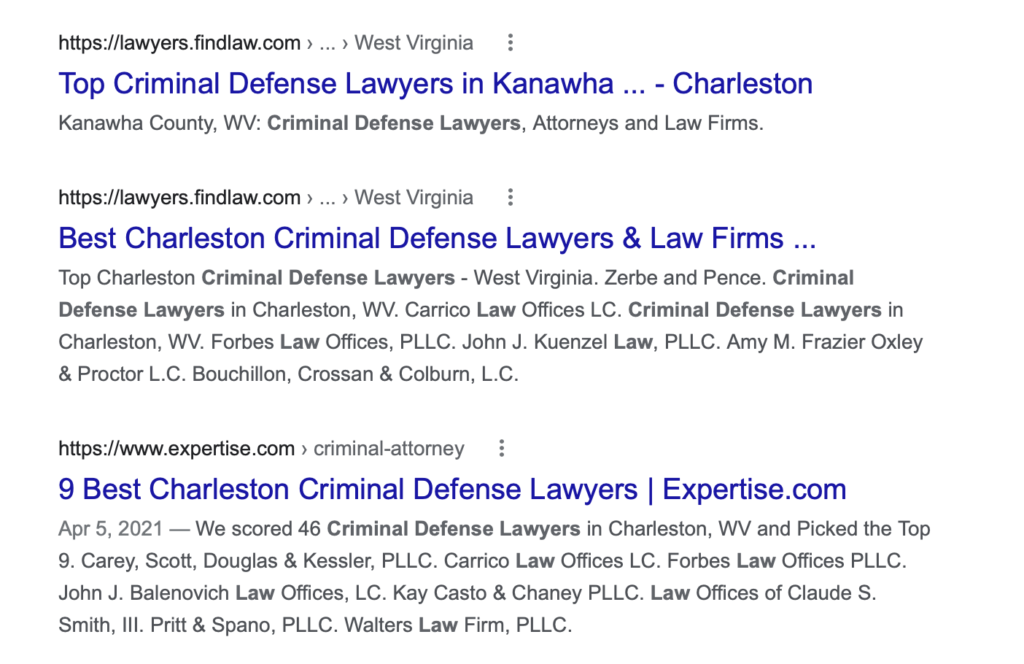
When we search Criminal Defense Attorney, we get search results that are actually showing attorney results (I’m getting back Charleston WV results due to geo-targeting)
To my point, those two keywords are very close to one another, but both produce different search results in Google. You have to be careful when you’re choosing your keywords and always think about user search intent.
Backlinks
Backlinks are the most influential SEO ranking factor. Backlinks act as votes for your web page, the more votes you get, the higher probability you rank better in Google.
Countless studies and test have proven this over and over again. While Google’s algorithm is always changing and adapting to the times, backlinks have remained the most important SEO ranking factor when it comes to ranking keywords on the first page of Google.
Unfortunately, link building is not easy, it’s a challenge to say the least. There’s a ton of link building strategies you can use to build backlinks to your website.
The simplest link building strategy is creating valuable, useful content for your audience. Once a web page is built, you begin sharing that article on all your platforms. If you don’t have a lot of reach, this could be a slow process, this is why you have to focus on other backlink strategies in the same process.
If you have SEO software (and you better get it), you can evaluate the backlink profiles of your competitors. You can build a list of potential link building partners by doing so. Once you know who links to them, you can begin evaluating how you can get the same backlinks.
Another way to build backlinks is by producing more valuable content than what a site currently links to. For example, when you build your backlink list, you may discover that one of your target sites links to an article that is outdated. You can reach out to the webmaster of that site, let them know you have an updated version that would add value to their audience.
All Backlinks Are Not Created Equal
It’s true, the value of a backlink depends on a number of different factors.
- Overall SEO value of the website.
- Overall SEO value of the linking page.
- Whether that backlink is do-follow or no-follow.
- Whether that linking page is ranking keywords or not.
- Whether the linking site has organic traffic or not.
When it comes to outranking a website for a specific keyword, it’s important to measure the types of backlinks that top ranking site has. This will give you a good idea of what you’re going to need (backlinks) in order to jump them in the search engine.
If I search “Search Engine Optimization” in Google, here’s what I get back.

The first organic search result is from Moz – they have a Beginner’s Guide To SEO article.
Next, I’m going to take that URL and I’m going to evaluate the backlinks that web page has.
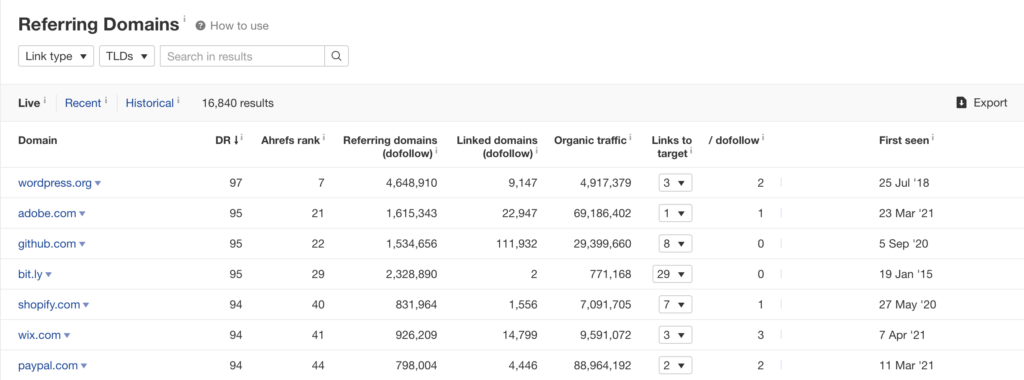
This single page has 16,840 live referring domains – that’s a LOT!
I’m using SEO software developed by Ahrefs – certainly one of the top SEO software providers. I couldn’t find this data without it.
By running the page’s referring domains, I can see which types of backlinks I need to build.
Backlinks are still one of the most important SEO ranking factors, so understanding how they work is extremely important to being successful with your search engine optimization strategy.
Backlinks from high authority websites are worth more versus websites that have less authority. In fact, Google PageRank existed to show us the authority score of a website. In 2016, Google gave PageRank the ax – today you rarely hear anything about it.
Internal links are important also, this refers to the links you build on your website, linking one page to another page. You want to make sure you’re using internal links within your content so Google spiders can access every page of your site.
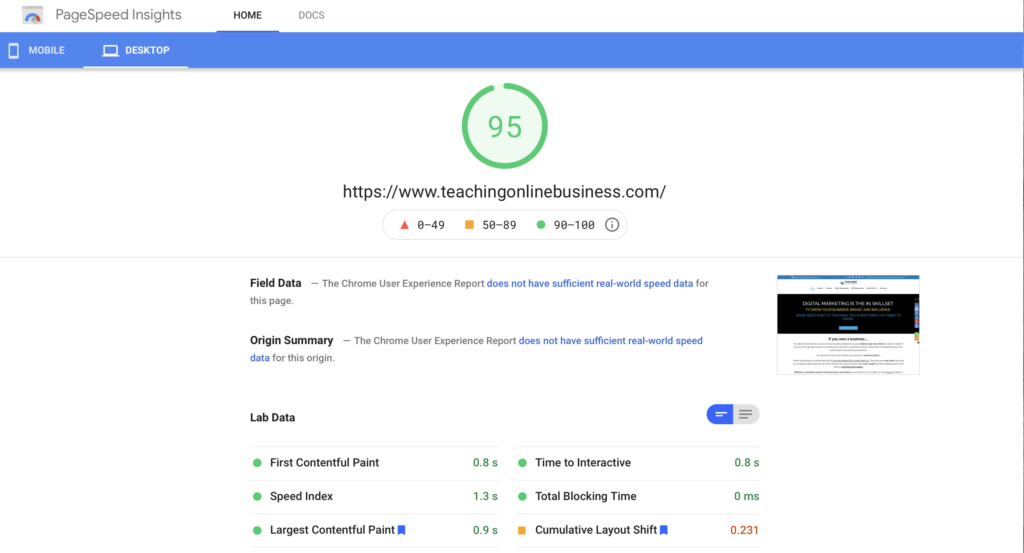
Pagespeed
Pagespeed is going to refer to how fast your page loads. It is a SEO ranking factor on both desktop and mobile.
Why is page speed important? It once again points back to what Google wants for users, they want you to have fast pages keep so users are satisfied with the search query search. If users are clicking on a search engine result and it takes a long time to load, that leads to a bad user experience.
While there’s a number of great tools you can use, I recommend checking your site speed with Google’s Pagespeed Insights tool.
Content
A lot of SEOs have mixed signals as it pertains to the type of content you need to produce to rank on the 1st page of Google. Should you write it yourself? Produce it with software? Outsource?
Content is very important to SEO – remember, Google wants to display the best possible content to the end user. They want that result to be reliable and useful to the searcher.
This is why Google uses EAT – you can learn more about EAT here.
Google uses content-related signals that center around trust, authority, and expertise.
How can you improve your content quality for SEO?
- Short sentences and paragraphs work great.
- Always link to your external resources.
- Avoid using big sections of just text.
- Use images, videos, quotes to break up text.
The SEO format of your content can play a role in ranking keywords.
Here’s a few more tips as it pertains to the format of your ranking page.
- Use your target keyword in your title.
- Use your target keyword in the first paragraph.
- Use your target keyword in headings.
- Use related keywords within your content.
- Use rich internal anchors within your content.
Closing It Out
It’s very important to know and understand how search engines work.
Search engine algorithms change frequently, so SEO is always a moving target. Even so, some SEO ranking factors never change and are just as important today as it was a decade ago.
If you’re reading this, you’re doing the right thing, you’re learning and that’s what it takes to master search engine optimization.


